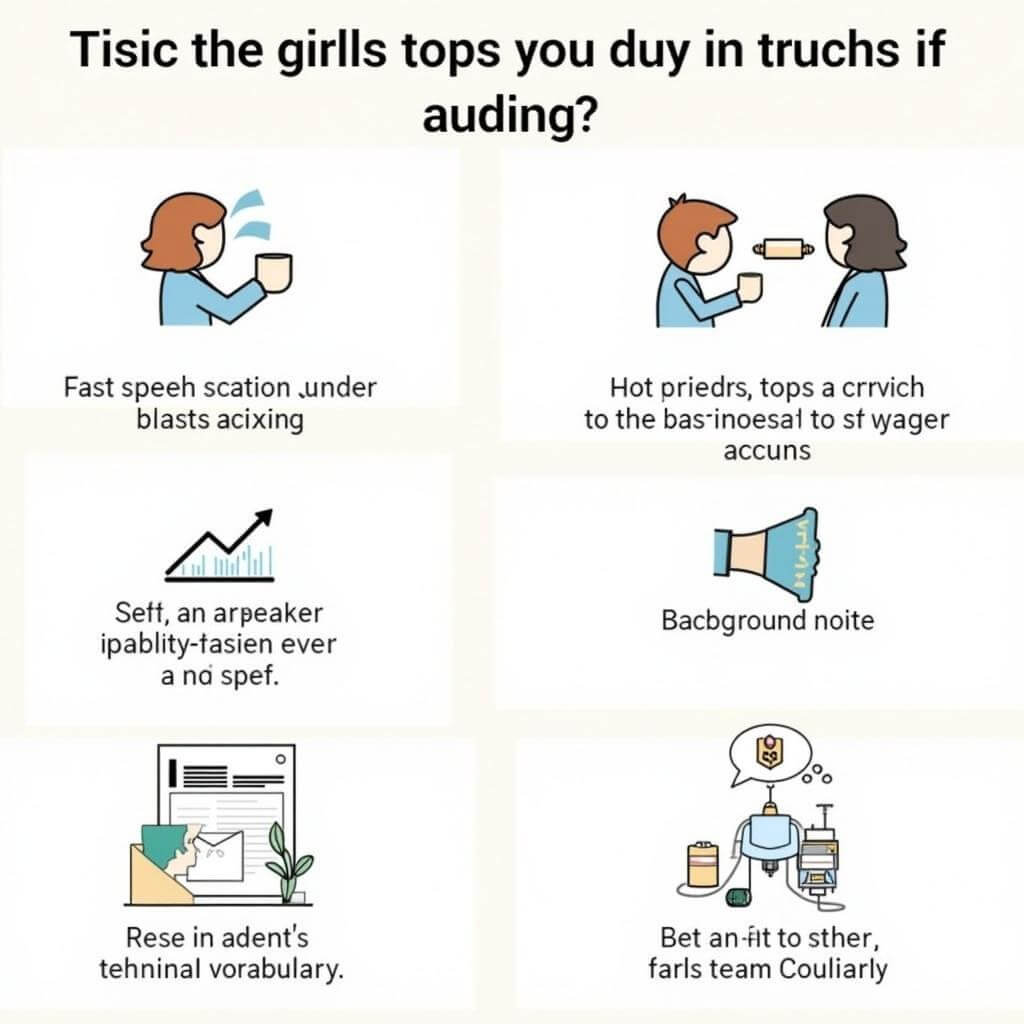The IELTS Listening test can be challenging, especially when it comes to tricky audio sections. As an experienced IELTS instructor, I’ll share valuable insights to help you navigate these difficult parts and improve your overall performance.
Understanding Tricky Audio Sections
Tricky audio sections in IELTS Listening often include fast speech, unfamiliar accents, background noise, or complex vocabulary. These elements are designed to test your ability to comprehend spoken English in various real-life situations.
Common Types of Tricky Audio Sections
- Rapid speech
- Multiple speakers
- Background noise
- Regional accents
- Technical vocabulary
- Distractors and similar-sounding words
- Indirect language and implied meanings
- Numbers and figures
- Proper nouns and spellings
- Idiomatic expressions

Strategies for Tackling Tricky Audio Sections
To excel in these challenging parts of the IELTS Listening test, consider the following strategies:
1. Improve Your Prediction Skills
Before the audio begins, carefully read the questions and try to predict the type of information you’ll need to listen for. This will help you focus on relevant details during the recording.
Example: If a question asks about a specific date, listen for time-related words and numbers.
2. Practice Active Listening
Engage with the audio by visualizing the scenario or conversation. This helps you stay focused and better understand the context of what you’re hearing.
3. Develop Note-Taking Techniques
Jot down key information as you listen, using abbreviations and symbols to save time. This skill is particularly useful for longer passages or when multiple pieces of information are given in quick succession.
4. Familiarize Yourself with Various Accents
Expose yourself to different English accents through podcasts, news broadcasts, and movies from various English-speaking countries. This will help you adapt to unfamiliar pronunciations during the test.
5. Expand Your Vocabulary
Focus on building your vocabulary, especially in areas commonly tested in IELTS, such as education, work, technology, and social issues. This will help you understand more complex or specialized terms in the audio.
Applying Strategies to IELTS Listening Tasks
Let’s look at how these strategies can be applied to different IELTS Listening question types:
Multiple Choice Questions
When facing multiple choice questions with tricky audio, listen for synonyms or paraphrased information that matches the options provided. Be aware of distractors – words or phrases that sound similar to the correct answer but are actually incorrect.
Example:
Audio: “The seminar will commence at quarter past nine.”
Question: When does the seminar start?
A) 9:00
B) 9:15
C) 9:45
In this case, “quarter past nine” is equivalent to 9:15, but the audio uses a less common way of expressing the time.
Gap-Fill Exercises
For gap-fill questions, pay close attention to the grammatical context of the sentence. The missing word should fit logically and grammatically into the sentence structure.
Example:
“The company’s annual ____ increased by 15% last year.”
Listen for words that could logically complete this sentence, such as “revenue,” “profit,” or “turnover.”
Matching Information
When matching information, focus on key details that distinguish one option from another. Listen for specific names, numbers, or descriptive phrases that can help you make the correct match.
Common Mistakes to Avoid
- Fixating on missed information: If you miss something, stay calm and refocus on the next question.
- Ignoring context clues: Pay attention to the overall context to help you understand difficult words or phrases.
- Forgetting to check answers: Always review your answers if time allows, especially for spelling and grammar.
- Losing focus during longer sections: Practice maintaining concentration for extended periods.
- Misinterpreting similar-sounding words: Be cautious of words that sound alike but have different meanings.
Effective Practice Techniques
To improve your performance in tricky audio sections, try these practice techniques:
- Timed practice: Simulate test conditions by timing yourself during practice sessions.
- Transcription exercises: Listen to short audio clips and try to transcribe them word-for-word to improve your listening accuracy.
- Shadowing: Repeat what you hear immediately after the speaker to improve your ability to process speech quickly.
- Dictation practice: Have someone read aloud to you and write down what you hear to improve your spelling and listening comprehension.
- Audio journal: Keep a journal of difficult words or phrases you encounter in your listening practice and review them regularly.
Remember, consistent practice is key to improving your performance in tricky audio sections. By implementing these strategies and practicing regularly, you’ll be better prepared to handle the challenges of the IELTS Listening test.
In conclusion, mastering tricky audio sections in IELTS Listening requires a combination of strategies, practice, and patience. Focus on developing your prediction skills, active listening, and note-taking techniques. Familiarize yourself with various accents and expand your vocabulary. Most importantly, practice regularly with authentic IELTS materials to build your confidence and improve your performance. With dedication and the right approach, you can overcome the challenges of tricky audio sections and achieve your desired IELTS score.